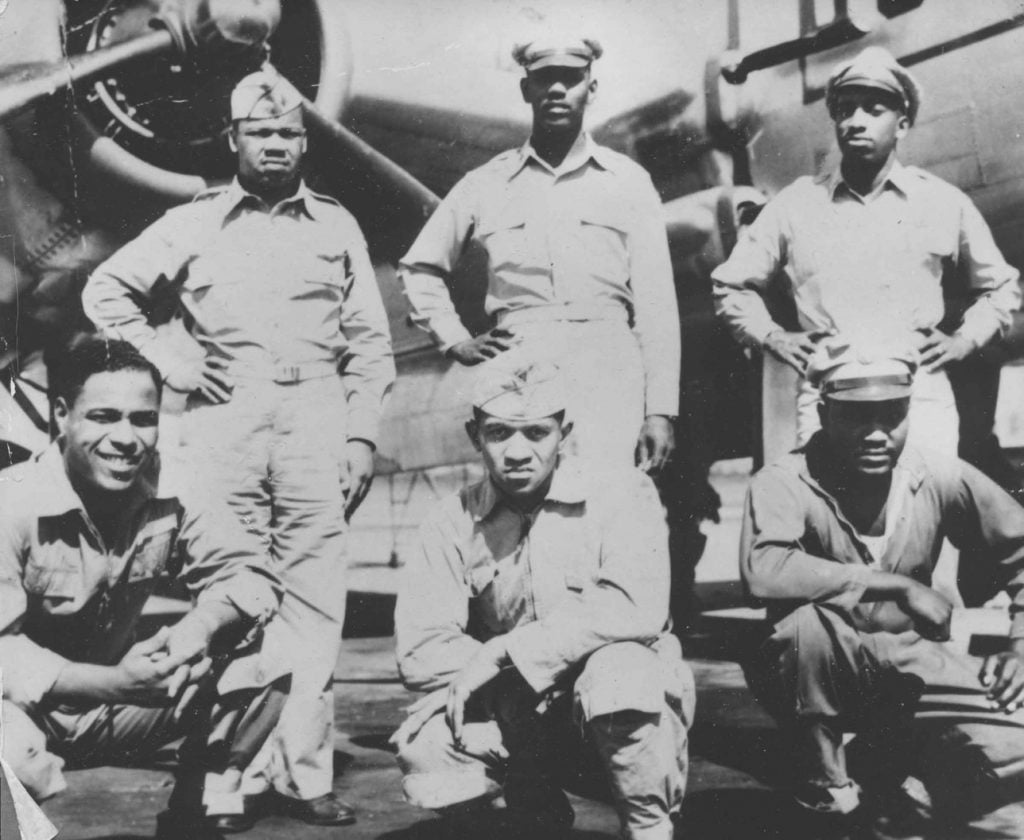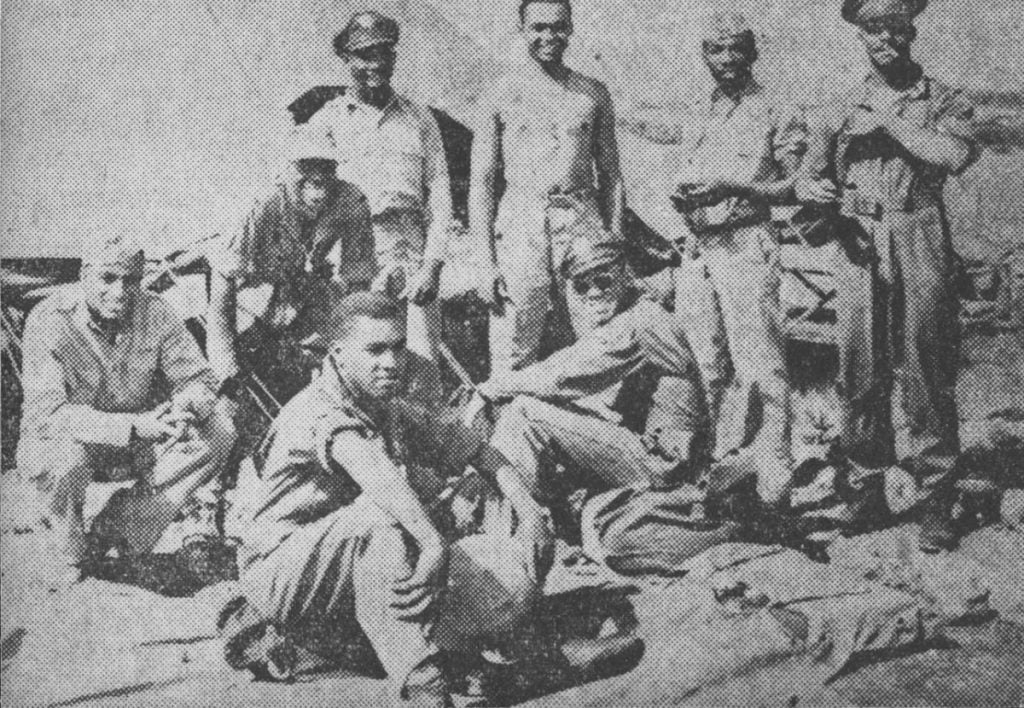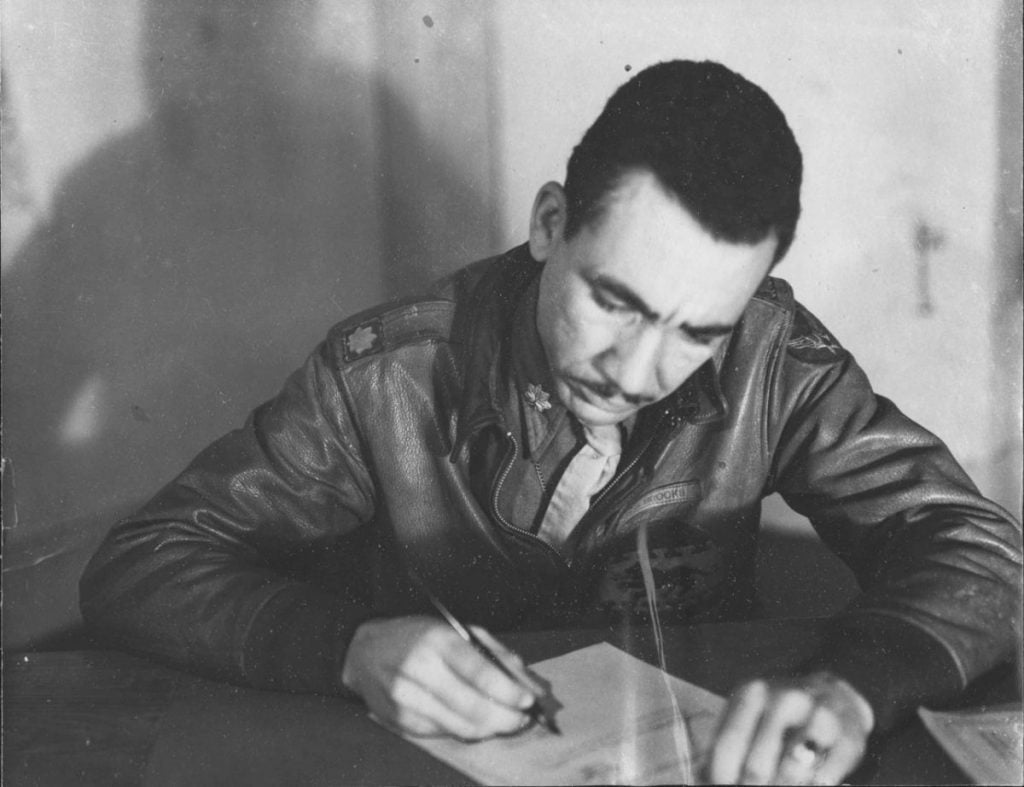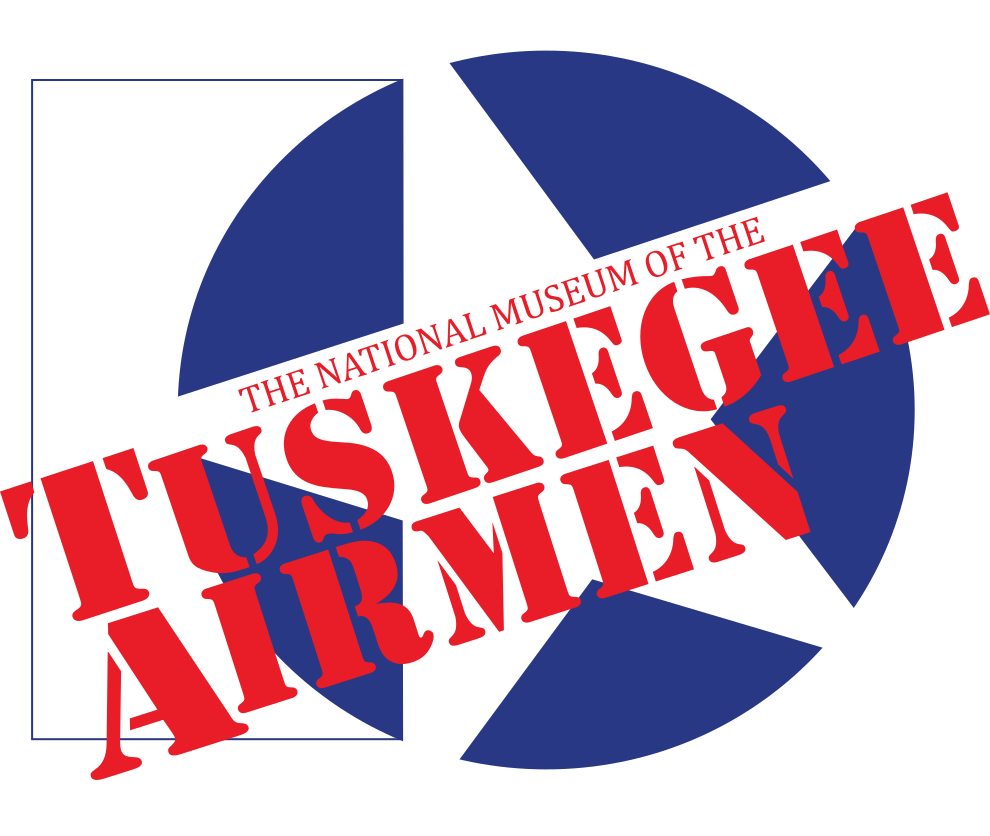The Tuskegee Airmen
Who are the Tuskegee Airmen of World War II?

The Tuskegee Airmen were dedicated, determined young men who enlisted to become America’s first black military airmen, at a time when there were many people who thought that black men lacked intelligence, skill, courage, and patriotism. They came from every section of the country, with large numbers coming from New York City, Washington, Los Angeles, Chicago, Philadelphia, and Detroit. Each one possessed a strong personal desire to serve the United States of America at the best of his ability. Those who possessed the physical and mental qualifications were accepted as aviation cadets to be trained initially as single-engine pilots and later to be either twin-engine pilots, navigators, or bombardiers. Most were college graduates or undergraduates. Others demonstrated their academic qualifications through comprehensive entrance examinations. No standards were lowered for the pilots or any of the others who trained in operations, meteorology, intelligence, engineering, medicine, or any of the other officer fields. Enlisted members were trained to be aircraft and engine mechanics, armament specialists, radio repairmen, parachute riggers, control tower operators, policemen, administrative clerks, and all of the other skills necessary to fully function as an Army Air Corp flying squadron or ground support unit. The black airmen who became single-engine or multi-engine pilots were trained at Tuskegee Army Air Field (TAAF) in Tuskegee Alabama. The first aviation cadet class began in July 1941 and completed training nine months later in March 1942.
Thirteen started in the first class. Five successfully completed the training, one of them being Captain Benjamin O. Davis, Jr., a West Point Academy graduate. The other four were commissioned second lieutenants, and all five received Army Air Corps silver pilot wings. From 1942 through 1946, nine hundred and ninety-two pilots graduated at TAAF, receiving commissions and pilot wings. Black navigators, bombardiers, and gunnery crews were trained at selected military bases elsewhere in the United States. Mechanics were trained at Chanute Air Base in Rantoul, Illinois until facilities were in place in 1942 at TAAF. Four hundred and fifty of the pilots who were trained at TAAF served overseas in either the 99th Pursuit Squadron (later the 99th Fighter Squadron) or the 332nd Fighter Group. The 99th Fighter Squadron trained in and flew P-40 Warhawk aircraft in combat in North Africa, Sicily, and Italy from April 1943 until July 1944 when they were transferred to the 332nd Fighter Group in the 15th Air Force. The 332nd Fighter Group consisted originally of the 100th Fighter Squadron, 301st Fighter Squadron, and 302nd Fighter Squadron. They prepared for combat at Selfridge Air Base, Michigan from March 1943 until December 1943.
The training was conducted in the P-40 Warhawk and P-39 Airacobra aircraft. The Group began overseas combat operations near Naples, Italy in February 1944 with the 12th Air Force, flying air patrols over Naples Harbor and the Mediterranean Sea. In April 1944, the 332nd Fighter Group transferred to the Adriatic Seaside at Ramitelli Air Strip, near Foggia, Italy, and began conducting long-range heavy bomber escort missions for the 15th Strategic Air Force. In July 1944, the 99th Fighter Squadron was transferred to Ramitelli and the Group became the only four-squadron fighter group performing bomber escort missions in the 15th Air Force. This was a significant factor in the effectiveness and success of the Group as it established the incredible and unprecedented record of flying 200 of its 205 bomber escort missions (Never Lost a Bomber is a myth that started because of the very low bomber losses when the Tuskegee Airmen were escorting. No other escort group can claim such low losses.) without the loss of a single bomber to enemy aircraft. The 99th Fighter Squadron received two Presidential Unit Citations (June-July 1943 and May 1944) for outstanding tactical air support and aerial combat in the 12th Air Force before joining the 332nd Fighter Group. The 332nd Fighter Group received the Presidential Unit Citation for its longest bomber escort mission to Berlin, Germany, on March 24, 1945. They destroyed three German ME-262 jet fighters and damaged five additional jet fighters without losing any of the bombers or any of its own fighter aircraft to enemy aircraft. The 332nd Fighter Group also distinguished themselves in June 1944 when two of its pilots flying P-47 Thunderbolt aircraft discovered a German destroyer in the harbor at Trieste, Italy. One of the pilots, Lieutenant Gynne Pierson of the 302nd Fighter Squadron, using only the aircraft’s 50-caliber machine guns, strafed the destroyer, causing it to explode and sink. This was another unprecedented aerial gunnery feat of World War II.


The tenacious bomber escort cover provided by the 332nd “Red Tail” fighters often discouraged enemy fighter pilots from attacking bombers they escorted. This resulted, however, in fewer enemy fighter challenges with resultant fewer enemy aircraft destroyed or damaged by the Group, as compared with other 15th Air Force fighter escort groups. The successful escort record did result in frequent expressions of appreciation from the bomber crews. The outstanding record of black airmen in World War II was accomplished by men whose names will forever live in hallowed memory. Each one accepted the challenge, proudly displayed his skill and determination while suppressing internal rage from humiliation and indignation caused by frequent experiences of racism and bigotry, at home and overseas. These airmen fought two wars – one against a military force overseas and the other against racism at home and abroad. The airmen who did not go overseas and trained at Selfridge Field, Michigan as bomber crew in the 477th Medium Bombardment Group experienced a great deal of racism. These highly trained military officers were treated as “trainees” and denied access to the base officers’ club, an act contradictory to Army regulations. There was a rather heated reaction and the Group was transferred to Godman Field, Kentucky. The unfair treatment and hostility continued at Godman Field and in early 1945, the group was transferred to Freeman Field, Indiana where the hostilities finally reached a climax. When black officers tried to enter the Freeman Field Officers’ Club, against direct orders for them to stay out, one hundred and three officers were arrested, charged with insubordination, and ordered to face court-martial. The court-martial proceedings were quickly dropped against one hundred of the officers; two officers eventually had their charges dropped and one officer, Lt. Roger “Bill” Terry, was convicted. Fifty years later, on August 12, 1995, at the Tuskegee Airmen National Convention in Atlanta, Georgia, fifteen of the original one hundred and three officers that were arrested received official notification that their military records had been purged of any reference to the Freeman Field incident. Also, Mr. Terry’s court-martial conviction had been reversed and his military record cleared. The remaining officers received instructions for clearing their records. After the war in Europe ended in 1945, black airmen returned to the United States and faced continued racism and bigotry despite their outstanding war record. Tuskegee Army Air Field continued to train new airmen until 1946, with women entering the program in several support fields. Large numbers of black airmen elected to remain in the service but because of segregation their assignments were limited to the 332nd Fighter Group or the 477th Composite Group, and later to the 332nd Fighter Wing at Lockbourne Air Base, Ohio.

